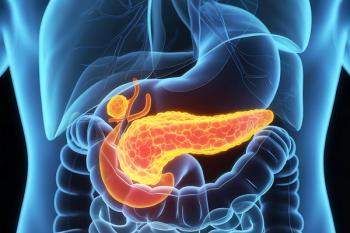
- The Column-08-13-2018
- Volume 14
- Issue 8
Forensic Profiling of Human Odour Using GC×GC–MS
Researchers from ESPCI Paris and the Institut de Recherche Criminelle de la Gendarmerie Nationale have developed and optimized a comprehensive two-dimensional GC–MS method for the forensic profiling of human hand odour.
Researchers from ESPCI Paris and the Institut de Recherche Criminelle de la Gendarmerie Nationale have developed and optimized a comprehensive two-dimensional gas chromatography–mass spectrometry (GC–MS) method for the forensic profiling of human hand odour (1).
Like fingerprints, human odour is said to be specific to each individual, consisting of hundreds of molecules, and has long played a role in crime investigation through the highly trained and unscrupulous nose of police dogs. However, during court proceedings more conclusive evidence is required and thus the development of an objective analytical strategy to characterize human odour is needed to complement existing canine capabilities.
The complexity of human odour is one of the major challenges to the development of such a technique, with comprehensive reviews of human-originating volatiles finding a wide variety of chemical compounds, including: acids, alcohols, aldehydes, esters, hydrocarbons, ketones, heterocyclic compounds, and sulphur-containing compounds (2,3).
Researchers reasoned that GC–MS would be the most appropriate method because of the nature of the molecules involved, but based upon the sample complexity and the peak capacity limitations of classic one-dimensional GC–MS it was determined that GC×GC–MS would be better suited. In order to optimize the method, 27 different analytical setups were evaluated based upon the criteria of column set, gradient, and a modulation time.
Results indicated that based upon the analytical criteria, including six complementary orthogonality criteria, the developed method was appropriate for the analysis of human hand odour.
References
- V. Cuzuel et al., J.Chromatogr. A1536, 58–66 (2018).
- J.S. Brown, P.A. Prade, A.M. Curran and K.G. Furton, Forensic Sci. Int.226, 173–182 (2013).
- Y. Hasegawa, M. Yabuki, and M. Matsukane, Chem. Biodivers.1, 2042–2050 (2004).
Articles in this issue
over 7 years ago
Analytical Life Cycle Management— The Coming Revolutionover 7 years ago
Optimizing Splitless GC Injectionsover 7 years ago
Advancing Chromatography Methods for Cannabis Analysisover 7 years ago
Tips & Tricks GPC/SEC: UV–vis Detectionover 7 years ago
Sciex Donates to World Cancer Research Fundover 7 years ago
Biodiesel-Diesel Blend Analysis Using UFGCover 7 years ago
Vol 14 No 8 The Column August 2018 North American PDFover 7 years ago
Vol 14 No 8 The Column August 2018 Europe and Asia PDFNewsletter
Join the global community of analytical scientists who trust LCGC for insights on the latest techniques, trends, and expert solutions in chromatography.





